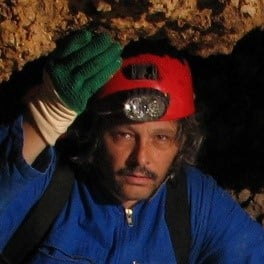Hotspots of Subterranean Biodiversity
A special issue of Diversity (ISSN 1424-2818). This special issue belongs to the section "Biogeography and Macroecology".
Deadline for manuscript submissions: closed (31 May 2021) | Viewed by 71117
Special Issue Editors
Interests: biodiversity; biogeography; ecology; speleobiology
Special Issues, Collections and Topics in MDPI journals
Interests: biogeography; evolutionary ecology; speleobiology
Special Issues, Collections and Topics in MDPI journals
Interests: biogeography; evolutionary ecology; speleobiology
Special Issues, Collections and Topics in MDPI journals
Special Issue Information
Dear Colleagues,
Thousands of species are known exclusively from caves and associated subterranean habitats. Many of these species are without eyes or pigment, and have adaptations to life in darkness. Collectively, they are one of the best examples of convergent evolution known. Globally, the number of caves is in the thousands, but only a very few harbor more than a handful of species. We provide an update on these hotspot caves, first enumerated by David Culver and Boris Sket in 2000. After an overview by the editors, approximately ten of these hotspot caves will be described and the fauna enumerated. The included caves will have 25 or more stygobionts, 25 or more troglobionts, or will be one of the richest caves in a large region, especially the tropics.
Prof. Dr. Tanja Pipan
Prof. Dr. David C. Culver
Dr. Louis Deharveng
Guest Editors
Manuscript Submission Information
Manuscripts should be submitted online at www.mdpi.com by registering and logging in to this website. Once you are registered, click here to go to the submission form. Manuscripts can be submitted until the deadline. All submissions that pass pre-check are peer-reviewed. Accepted papers will be published continuously in the journal (as soon as accepted) and will be listed together on the special issue website. Research articles, review articles as well as short communications are invited. For planned papers, a title and short abstract (about 100 words) can be sent to the Editorial Office for announcement on this website.
Submitted manuscripts should not have been published previously, nor be under consideration for publication elsewhere (except conference proceedings papers). All manuscripts are thoroughly refereed through a single-blind peer-review process. A guide for authors and other relevant information for submission of manuscripts is available on the Instructions for Authors page. Diversity is an international peer-reviewed open access monthly journal published by MDPI.
Please visit the Instructions for Authors page before submitting a manuscript. The Article Processing Charge (APC) for publication in this open access journal is 2600 CHF (Swiss Francs). Submitted papers should be well formatted and use good English. Authors may use MDPI's English editing service prior to publication or during author revisions.
Keywords
- hotspot caves
- karst
- stygobionts
- subterranean biodiversity
- subterranean biogeography
- troglobionts
Related Special Issue
- Hotspots of Subterranean Biodiversity—2nd Volume in Diversity (15 articles)








